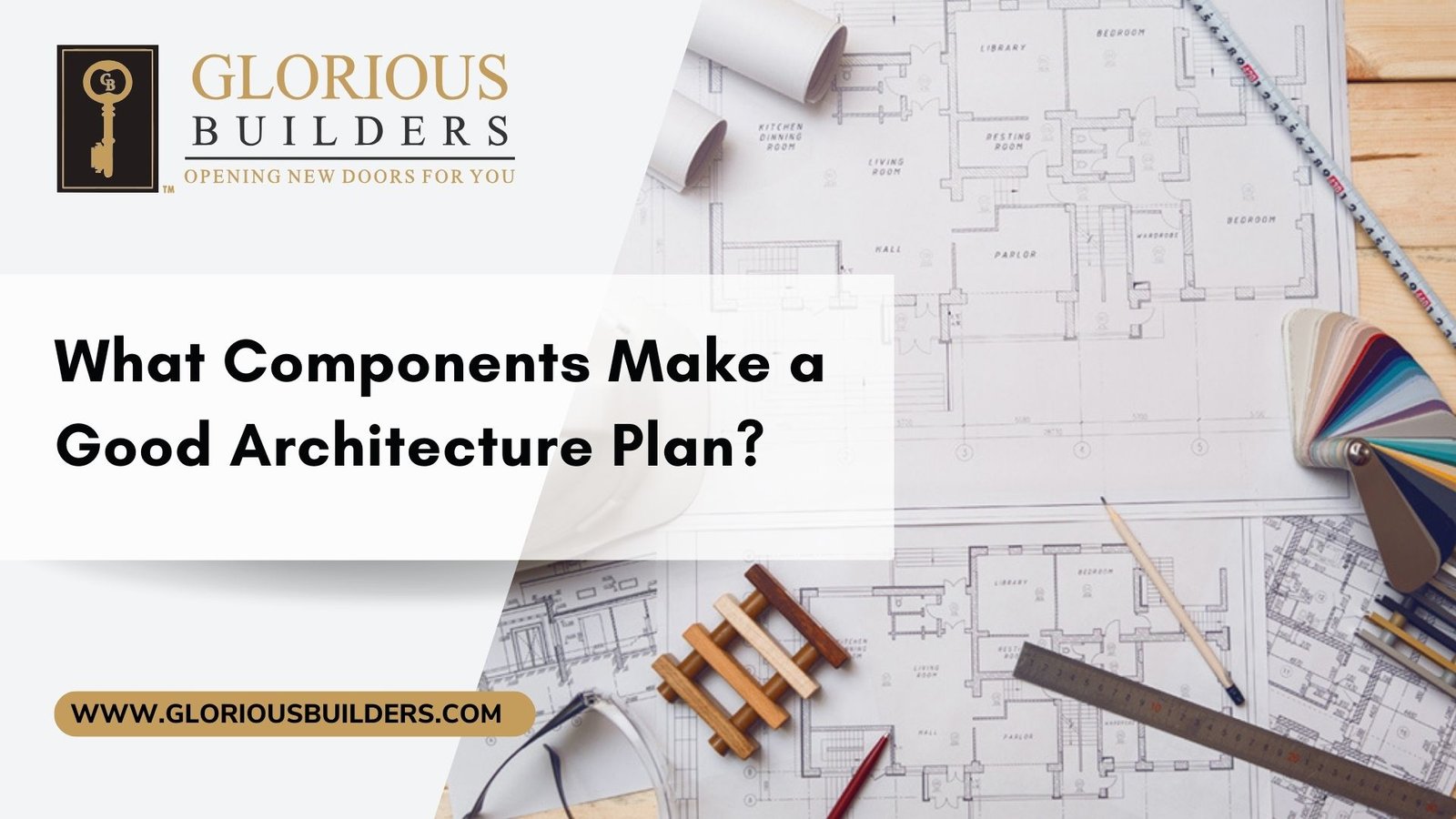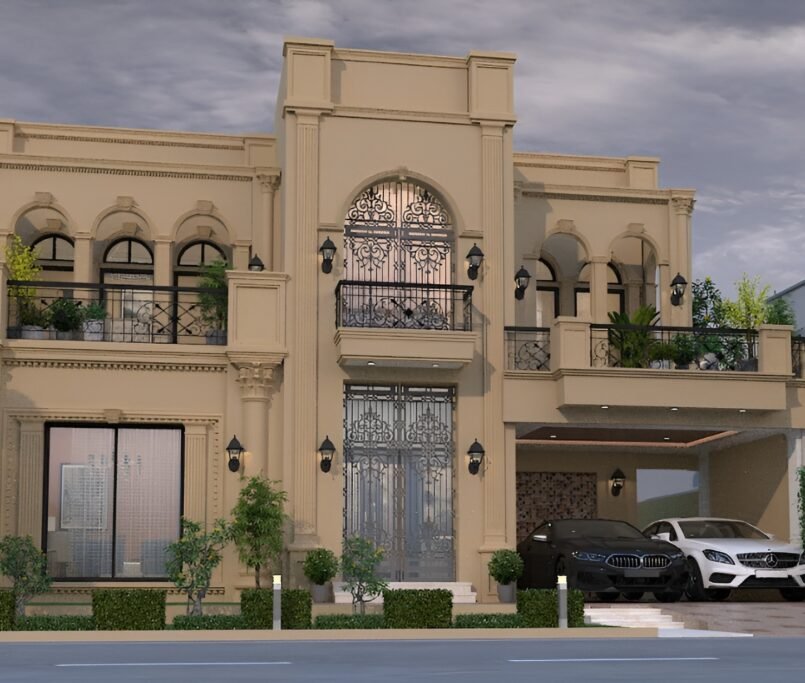What components make a good architecture plan?
An Architectural Harmony Site Plan
The architecture begin by deciphering the distinctive features of the site during the initial stages. Sunlight, wind patterns, and views are taken into consideration. Building placement is optimized for both sustainability and aesthetic balance while preserving existing structures and natural elements. As part of the site planning process, we discuss rainwater harvesting, green space integration, and energy-efficient landscaping.
Designing Space Symphonies
The detailed analysis of floor plans goes beyond mere spatial arrangement to explore the intricacies of each space. To enhance the overall user experience, architects consider the flow of spaces, based on the client’s priorities for functionality and aesthetics. During discussions, zoning requirements, accessibility features, and future adaptability considerations are discussed. Interior design, including furniture placement and room connectivity, takes center stage, resulting in floor plans that reflect the client’s preferences while optimizing practicality and visual appeal.
Unveiling Elevations’ Aesthetic Identity
Elevations serve as a canvas for expressing architectural identity, provoking detailed discussions. In addition to discussing architectural style and aesthetics, we explore materiality and finishes to express the client’s brand or personal tastes. Sustainability considerations, such as eco-friendly materials and energy-efficient facade solutions, are integrated into the conversation. As a result of the collaborative process, elevations become a visual embodiment of architectural character and sophistication that reflects the client’s vision.
Navigating structural and spatial complexities
Sections explore structural and spatial complexities at the core of the building. Discussions focus on desired heights, volumes, and the interaction between levels. To ensure compliance with safety standards and engineering feasibility, collaboration with structural engineers becomes crucial. A focus is placed on fluidity and functionality within the building as well as how internal spaces harmonize. Meticulous considerations of load-bearing, integration of mechanical systems, and achieving a balance between aesthetics and structural integrity define this phase.
From Concept to Reality
A meticulous transition from concept to construction reality is marked by the discussion of details. Intricacies of joinery and material specifications are discussed in conversation. To ensure that proposed details are architecturally sound and practically feasible, architects and contractors collaborate. During this phase, we explore the intersection of materials, construction methods, and the implementation of intricate design features, navigating the practicalities of construction company.
Creating narratives with renderings
Renderings are the culmination of a narrative told through visual elements. We discuss aspects of the design that are intended to evoke an emotional response and to tell a story. Discussions refine renderings until they capture the essence of the architectural vision through various visual styles, lighting scenarios, and landscaping details. Renderings serve as powerful tools for communicating the design’s aesthetics and experiential qualities to a broad audience during this collaborative phase.
Orchestrating project components
The schedule provides a roadmap for orchestrating the various components of the project. Material choices, specifications, and environmental considerations are discussed. Suppliers and contractors discuss procurement timelines, cost estimates, and quality standards in detail. As a result of collaborative dialogue, schedules are aligned with sustainability goals and budget constraints, optimizing efficiency and meeting project milestones. Lead times for materials are discussed, allowing seamless coordination between conceptualization and construction. The construction schedule plays an important role in transforming the architectural vision into a tangible, well-coordinated, and efficient process.
Meticulously orchestrating essential systems
It is crucial to meticulously orchestrate the layout of essential systems within a building when preparing a plumbing plan. Plumbing fixtures are strategically placed to optimize functionality and efficiency. Plumbing codes and practicality are taken into account when locating sinks, toilets, and other fixtures. As part of the collaborative dialogue, the intricacies of pipe routing are explored, emphasizing the efficiency of water supply and drainage systems.
Tailoring plumbing for specific projects
A detailed discussion explores the specific requirements of the project, balancing aesthetic considerations with practical plumbing requirements. Plumbing engineers work with architects to ensure proposed plumbing plans align with safety standards. The project’s eco-friendliness may be enhanced by sustainable plumbing practices, such as water-saving fixtures.
Keeping Codes and Regulations Compliant
Discussions explore the intricacies of plumbing codes and regulations, exploring compliance with local plumbing standards. Ensuring proposed plans meet safety requirements and obtain necessary approvals is a key focus. This dialogue includes considerations for accessibility, pipe sizing, and fixture clearances, ensuring the plumbing system is not only functional but also compliant with regulatory frameworks.
Functional Harmony in Electrical Plans
The placement of electrical components within a building is intricately mapped out in electrical plans. Outlets, switches, and lighting fixtures are strategically positioned to optimize functionality and safety. Compliance with electrical codes and regulations is also considered, emphasizing both practicality and safety.
Intricacies of electrical systems
Electrical systems are also considered, addressing potential challenges and ensuring seamless integration within the building structure. Innovations in energy efficiency are often discussed, including the integration of renewable energy sources like solar panels. Collaborative efforts with other design disciplines, such as plumbing and structural engineering, play a crucial role in creating cohesive and well-coordinated plans.
Refining plans with electrical professionals
Electrical professionals are consulted to refine plans with practical installation aspects and potential maintenance requirements in mind. As a result, the electrical system aligns seamlessly with the overall architectural and structural design, avoiding conflicts and maximizing space utilization.
Electrical Codes and Regulations
Discussed are the intricacies of electrical codes and regulations, as well as compliance with local electrical standards. The safety of proposed plans and the obtaining of necessary approvals are key priorities. As part of this dialogue, circuitry, load balancing, and emergency electrical systems are discussed, ensuring that the electrical plans are not only functional but also in compliance with regulatory requirements.
Electrical Plans for the Future
Discussions focus on the incorporation of modern technologies into electrical plans, including smart home systems, security features, and energy management solutions. During this forward-looking conversation, ensuring electrical plans contribute to the building’s adaptability and readiness for emerging trends becomes a focal point.
Architectural discussions encompass both immediate and future-oriented considerations holistically. By optimizing spatial layouts for practicality and integrating cutting-edge technologies, the collaborative dialogue ensures plans align seamlessly with the overarching architectural vision, prioritizing efficiency, safety, and adaptability.




